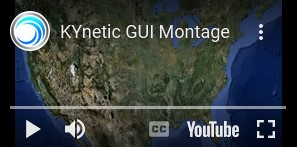- Model Comparison and Limitations
KYPipe models closed-channel, full-pipe flow systems. Pressures above the liquid vapor pressure can be modeled (values slightly below atmospheric but above vapor pressure are acceptable). Limited (1 or 2 locations) and localized (only in one small area of piping) instances of sub-atmospheric and vapor pressure can be handled (e.g., in low pressure sewer piping systems), however if pipes are not normally full, a different model should be used. Other liquids besides water can be modeled. KYPipe does not model two-phase flow. KYPipe includes steady-state analysis and Extended Period Simulations (EPS).
Surge is used for water hammer analysis. Surge models closed-channel, full-pipe flow systems. Subroutines handle areas of cavitation; however, if pipes are not normally full throughout, a different model should be used. Pressure cannot be below zero gauge at the start of the simulation at the location of an air-vacuum valve. Other liquids besides water can be modeled. Surge does not model two-phase flow. Surge modeling is dynamic, running in real time at a default or user-defined time step, but can also be run in steady-state.
TranSurge is similar to Surge, but is specialized to model long transmission mains. TranSurge models closed-channel, full-pipe flow systems. Subroutines handle areas of cavitation; however, if pipes are not normally full, a different model should be used. Pressure cannot be below zero gauge at the location of an air/vacuum valve at the start of the simulation. Other liquids besides water can be modeled. TranSurge does not model two-phase flow. TranSurge modeling is dynamic, running in real time at a default or user-defined time step, but can also be run in steady-state. Since TranSurge is designed to model transmission mains, the number of loops is limited, unlike Surge. However, TranSurge has unlimited pipes and includes Excel and CAD profile import tools and a CAD profile export tool which are not found in Surge.
SWMM models open- and closed-channel, full-pipe and partially-full flow systems. Pressure within the system can be modeled below zero gauge pressure, but cavitation cannot be modeled. Only water can be modeled, not other liquids. SWMM does not model two-phase flow. Unlike KYPipe, SWMM is limited to steady-state analysis only, and does not model Extended Period Simulations (EPS).
GoPlot is for users who need to create water supply curves with or without fire pumps. GoPlot produces Fire Pump Test Plots and very high quality and comprehensive Fire Pump Reports.
GoFlow is similar to KYPipe but is limited to specialized features for fire sprinkler analysis. GoFlow models closed-channel, full-pipe flow systems. Pressures above the liquid vapor pressure can be modeled (values slightly below atmospheric but above vapor pressure are acceptable); however, if pipes are not normally full, a different model should be used. GoFlow does not model two-phase flow. Unlike KYPipe, GoFlow is limited to steady-state analysis only, and does not model Extended Period Simulations (EPS). GoFlow includes automatic sprinkler system layouts, over 200 backflow preventers, pipe schedules from three different hazard classifications, supply plots, hydraulic summaries, required capacity analysis, remote area analysis and Early Suppression, Fast Response (ESFR).
Gas analyzes steady, one-dimensional, isothermal flow for ideal and non-ideal, variable-density gases. Gas includes steady-state analysis but not transient (i.e., surge) analysis.
Steam analyzes steady, one-dimensional, saturated flows. SuperSteam is an advanced version of Steam. SuperSteam was developed specifically for modeling distribution networks designed for superheated steam. Steam and SuperSteam include steady-state analysis but not transient (i.e., surge) analysis. SuperSteam models heat loss, but Steam does not.
2. Model Operating Principles
Liquid Models
The above liquid models solve the partial differential equations for continuity, momentum and energy in full pipes using the Newton Rhapson linearized approach to calculate flow in pipes and pressure at nodes iteratively until the analysis converges on a solution with an acceptable degree of accuracy. As such, the analytical approach is explicit as opposed to implicit, and deterministic as opposed to probabilistic. Surge relies on the Wave Plan Method (WPM), or Wave Method (WM), as opposed to the Method of Characteristics (MOC), which is explained further here.
Gas Models
Gas: this model computes gas pressures, densities, and flowrates by accurately balancing the conservation of mass and energy equations, as well as the ideal and real gas laws. As stated above, flows are steady, one-dimensional, and isothermal, but the software accounts for different temperatures in various lines. Friction calculations are performed using the Colebrook equation, which is the most accurate equation available, to solve for the Darcy-Weisbach friction factor. Users can specify constant density calculations, molecular weights, as well as the critical temperature and critical pressure. Gas model outputs include pressure at junction nodes, as well as flows, pressure drop and mean flow velocity for each line, and the area of constriction within each line which will cause choked flow. Outputs also include the maximum Mach number, which indicates the location of possible choked flows.
Steam: flow calculations (including saturated and superheated steam) are based on the hydraulic engine used for gas flow calculations, with relevant changes to include the necessary state properties associated with steam flows. The latest IAPWS-IF97 steam tables are built into the analysis engine, so all the relevant state parameters are dynamically updated during the iterative solution process of balancing the conservation equations. Like the Gas model, steam relies upon the Colebrook equation to determine the Darcy-Weisbach friction factor.



